India’s foreign policy, like that of any other country, is the resultant of a complex interplay of several factors most notably its history, geography, power potential, ethos, and polity. These have beckoned India towards the adoption of a resolutely independent foreign policy, outside any alliance system, based upon a sense of empathy and solidarity with developing countries particularly in Asia and Africa. The inherently tolerant and resilient Indian ethos, marked by the absence of any hegemonistic and territorial ambitions, which propelled it towards a democratic, secular and federal polity equally influenced its fervent advocacy of peaceful coexistence and for the resolution of differences through dialogue. The practical underpinning for such an approach lay in the recognition that peace was essential for rapid economic progress--- a prerequisite for taking its teeming masses out of poverty.
In view of the foregoing, it is no surprise that the establishment of close and friendly ties with its immediate neighbours has always been high on India’s priority. Its relations with its neighbours have been coloured by the concept of Panchsheel which entails: respect for each other’s territorial integrity and sovereignty, non aggression, non interference, equality and mutual benefit, and peaceful coexistence. But beyond this, India’s vision for South Asia is that it should enjoy the freest possible movement of people, goods and services across state boundaries as is the case in Europe. Visas should become redundant, or at least much easier to obtain, cross border trade and investments should be the norm, joint ventures should flourish, and a South Asian identity should be more recognizable. This is India’s hope and endeavour within the SAARC framework. Though progress in this direction has been slow, India has registered considerable success bilaterally in taking relationships with some of its neighbours like Bhutan, Bangladesh and Sri Lanka to new highs.
Regrettably, such success has not been replicated in India-Pakistan relations. These continue to be marred by differences and distrust although India has always wanted friendly and good neighbourly ties with Pakistan and remains committed todate to progressing them through dialogue. Since prominent Pakistani leaders, like former President Musharraf and former Foreign Minister Kasuri, have made known that the differences on major issues had been virtually resolved on the back channel, it would be logical to assume that the root of the rocky relationship between the two countries rests not on such differences but on Pakistan’s inimical mindset in regard to India.1 Such a mindset has, through the years, been promoted by the Establishment in need of the Indian bogey in order to keep the country together, to avoid ceding genuine power to the democratic forces, and to ensure that it continues to call the shots in perpetuity.2 No wonder, therefore, that Pakistan today repudiates the understandings reportedly arrived at on the back channel.3
Pakistan’s negative mindset which has been the stumbling block to the normalization of India-Pakistan relations is largely due to the cultivation and propagation of the following myths about India.
Myth No 1 is that India has never reconciled itself to the creation of Pakistan and that it wants to undo the same. There is no truth in this. While India never subscribed to the two nation religion based theory, the fact of Partition as an irreversible phenomenon was accepted by it immediately after the event. In this context, it is relevant to recall that while speaking at Aligarh Muslim University on January 24th, 1948 Prime Minister Nehru stated : “ We have been charged with desiring to strangle and crush Pakistan, and to force it into a reunion with India. That charge, as many others, is based on fear and a complete misunderstanding of our attitude…. Compulsion there can never be and an attempt to disrupt Pakistan will recoil to India’s disadvantage…..There is no going back in history. As a matter of fact, it is to India’s advantage that Pakistan should be a secure and prosperous state with which we can develop close and friendly relations. If today, by any chance, I was offered a reunion of India and Pakistan, I would decline it for obvious reasons. I do not want to carry the burden of Pakistan’s great problems. I have enough of my own.”4 Indeed, Indian leaders like Mr Vajpayee and Dr Man Mohan Singh have echoed Mr Nehru’s view about wanting to see a stable and prosperous Pakistan.5
Myth No 2 is that India has hegemonistic designs on Pakistan. Indian policies are not Pakistan centric unlike Pakistan’s policies which are India centric. Any action taken by India is commonly regarded by Pakistan as directed against it. India has never coveted any Pakistani territory nor had any designs on it. Its primary concern is the well being of its nationals and it would, therefore, not like to be distracted from this task. It is the harsh reality of geopolitics that India, with its security concerns extending well beyond Pakistan, has had to divert its resources into building up its capabilities so as to be able to safeguard its territorial integrity and sovereignty. This does not signify hegemonistic tendencies. Indeed, as pointed out by Air Marshall Asghar Khan in the late eighties all the India-Pakistan wars were started by Pakistan. India did not initiate them.6 In the same vein George Fulton while referring to the omnipotence of the Pakistan military in the Express Tribune of March 2, 2011 states “Kargil, the attack on India’s Parliament and, more recently, Mumbai have all occurred since we got the bomb — attacks that couldn’t have been carried out without some military/intelligence involvement.” It is thus clear that while India has all along been a status quo state Pakistan has stopped at nothing to change the status quo against India.
Myth No 3 is that India is Hindu State and therefore inimically disposed to Pakistan. This is both incorrect and unwarranted. Though the majority of the Indian population is Hindu, India is a secular state. Home to nearly all the major religions India accords equality of treatment to all persons both in terms of practicing and propagating their faith and in terms of their participation in all spheres of public life. Muslims, numbering nearly 161 million, constitute the largest minority community in India and are the third largest conglomeration in any country after Indonesia and Pakistan.7 They are active participants in all facets of India’s national life and have adorned the highest and most sensitive positions in government. But even if India were an Hindu State to regard it as inimical purely on grounds of religion would be a gross misreading of Hinduism which is not an aggressive proselytizing faith.
Myth No 4 is that India is averse to good neighbourly ties with Pakistan. This is a travesty of facts. India has always been deeply committed to improved ties with Pakistan. Towards this end it has over the years made many concessions and gestures to Pakistan. Some of these may be enumerated as follows:
- Payment of Rs 75 crores to Pakistan on account of division of assets of undivided; Rs20 .crores were paid in August 1947 and balance of Rs55 crores in January 1948 even as Pakistan was attacking India;
- Non pursuit of its claims vis a vis Pakistan for non payment of the latter’s partition debt of Rs300 crores;8
- Conclusion of an enormously generous Indus Waters Treaty in 1960 under which India, though it had 40% of the catchment area, agreed to an allocation of only 20% of the flows of the Indus Waters. In addition, India paid Pakistan over 62 million pounds sterling for building replacement canals, reservoirs etc. as per Article V of the Indus Waters Treaty;
- Following the 1971 conflict India negotiated an agreement with Pakistan at Simla in 1972 for across the board normalization of relations rather than imposing a settlement. In the process India returned the 5386 square miles of Pakistani territory captured by it in Sind (5000 square miles) and Punjab (386 square miles) without exacting a quid pro quo;9
- India obtained “the concurrence of Bangladesh”10 for the return of the nearly 92000 Pakistani prisoners of war held by it under the joint India-Bangladesh Command without asking for anything in return;
- India facilitated Pakistan’s entry into NAM in 1979 11 and re-entry into the Commonwealth in 1989;
- India has unilaterally accorded Most Favoured Nation treatment to Pakistan for import of the latter’s goods to India.
Clearly the jettisoning of such negative myths about India is necessary for any genuine improvement in India-Pakistan ties. Notwithstanding Pakistan’s unrelenting hostility towards India, the latter continues to seek normalization of relations through dialogue.
Multiple Tracks of Engagement
India-Pakistan engagement has been taking place on multiple tracks which fall into the following four broad categories:
- Track 1, or official level dialogue, conducted between the two countries at the summit level, the ministerial level and amongst their respective diplomats and bureaucrats. Such dialogue has often been in the full public gaze but, occasionally, has also been discreet.
- Track 1.5 dialogue, better known as the back-channel, is the officially sanctioned dialogue on behalf of the respective governments but away from the public gaze.
- Track 2 diplomacy which constitutes unofficial interaction amongst opinion makers constituting former officials and military personnel, academicians, journalists and even politicians. Such interaction may be with or without government approval and its outcome may or may not be fed into the respective governments.
- Track 3 diplomacy which is in the nature of people to people exchanges.
Official Level or Track 1 dialogue.
This ranges from expert level meetings, as between the Indus Water Commissioners, to summit level meetings between the leaders of the two countries. The point persons for India-Pakistan relations and for the conduct of dialogue amongst them are the Foreign Secretaries.
Through the 80’s and right upto the January 1994 Dixit-Shahryar Khan talks, the India-Pakistan Foreign Secretary level dialogue was without a pre determined and standard written agenda with each side free to raise any issue. Ofcourse, each side was made aware in advance of what the other would raise. Discussions at these meetings were wide ranging and occasionally even covered regional issues. The Foreign Secretary level talks were supplemented on a need basis by secretary/expert level talks which had their own autonomous life.
Following the January 1994 India-Pakistan Foreign Secretary level talks, Pakistan indicated an unwillingness to continue them unless India gave some substantive signals to meet its demands on Kashmir, notably deinduction of India troops and the holding of a plebiscite. In adopting this approach, which resulted in a three year hiatus in the Foreign Secretary level talks, Pakistan, perhaps, felt that the breakdown in talks would serve it well in internationalising the Kashmir issue, so important at a time when it was seeking a Kashmir oriented resolution against India in the Human Rights Commission and the first and third Committees in the UN.
Through 1996 much work was done quietly away from the glare of publicity at the initiative of the Indian Foreign Secretary to get the dialogue process back on track.12 The advent of the Nawaz Sharif and Gujral governments greatly helped this process and in the March and June 1997 the broad parameters of the composite dialogue process were hammered out in formal Foreign Secretary level talks. Final shape was given to these in a meeting between the Foreign Secretaries on the sidelines of the UN General Assembly Session in September 1998.
The price that India paid for getting Pakistan to the table was by agreeing to give a high profile to the Kashmir issue, through a structured and written agenda which provided that it would be discussed in a separate meeting at the Foreign Secretary level and prior to the meetings on all the other issues barring that on Peace and Security.13 While not accepting Pakistan’s view that progress on any issue should be hostage to progress on Kashmir, it conceded the point that all issues should be addressed in an “integrated manner” and progress thereon would be coordinated and monitored by the Foreign Secretaries. It was India’s hope that once the dialogue was underway progress in some areas at least would become possible and thereby the normalisation of relations would be facilitated.
The India-Pakistan joint statement of September 23rd 1998 issued following the meeting of the two Foreign Secretaries in New York identified the issues of concern to be addressed by the two sides and the levels at which this would be done in the following terms:
- Peace and Security including CBMs - Foreign Secretaries
- Jammu and Kashmir - Foreign Secretaries
- Siachen - Defence Secretaries
- Wuller Barrage/Tulbul Navigation Project - Secretaries, Water & Power
- Sir Creek - Additional Secretary (Defence)/Surveyors General
- Terrorism and Drug Trafficking - Home/Interior Secretaries
- Economic and Commercial Cooperation - Commerce Secretaries
- Promotion of Friendly exchanges in various fields - Secretaries, Culture.
In pursuance of the aforesaid joint statement the first substantive round of the composite dialogue was initiated with the Foreign Secretaries having separate meetings on items (a) and (b) above in October 1998 followed by meetings between the concerned officials on the remaining six issues. The review of these discussions scheduled for the first half of February 1999 was not to be because of Prime Minister Vajpayee’s visit to Pakistan that month and the subsequent the deterioration in ties between the two countries. Kargil, the military coup in Pakistan, the IAC aircraft hijacking to Kandahar, Agra, terrorist attacks most notably on the J&K Assembly and the Indian Parliament, Operation Parakram etc stymied the composite dialogue process, led to curtailment of existing links and brought the two countries to the brink of war.
The composite dialogue process, in its present form, could only be resumed in June 2004 after a thaw in India-Pakistan relations in the preceding year marked by moves to restore and enhance contacts and connectivity together with the decision of the two countries to observe a ceasefire along their borders. The immediate impulse for a renewal of the composite dialogue came from the Vajpayee-Musharraf meeting on the sidelines of the SAARC Summit in Islamabad in January 2004. The joint press statement issued thereafter not only refers to their decision to resume the composite dialogue but also a clear undertaking by Musharraf that he would “not permit any territory under Pakistan 's control to be used to support terrorism in any manner.”14 It is clear from the joint statement issued by the two Foreign Secretaries following their meeting in February 2004 that the agenda and modalities of the dialogue process would remain the same as hitherto except on the following two counts:
- The linkage between progress on other issues to that on Kashmir, so keenly desired by Pakistan and earlier to an extent ensured by the words that all issues be addressed in an “integrated manner”, was attenuated as these words do not figure in the joint statement issued by the Foreign Secretaries in February 2004.
- The review process earlier kept at the Foreign Secretary level was elevated to the Foreign Minister level in deference to Pakistan’s demands.
Between 2004 and 2008, four rounds of the composite dialogue were completed, and the two countries had barely commenced the fifth round when the 26/11 terror attacks by the Lashkar-e-Taiba violated the solemn assurances given at the highest levels by Pakistan and thereby eroded the basis of the dialogue viz. talks must take place in a terror free environment.
The main achievements of the composite dialogue from 2004 and 2008 may be listed as improving the international ratings of the two countries, improving the atmospherics between the two countries, introduction of several CBMs designed primarily to enhance India-Pakistan contacts and connectivity including across the Line of Control, a 500% increase in trade and a tangible decline in infiltration and ceasefire violations.
It may, however, be noted that despite all the hype about increased people to people links and connectivity the actual movement of people between the two countries is still well below the levels prevailing before the closure of the Indian mission in Karachi in 1994. Prior to that India was issuing over 20000 visas per month as against around 10000 after the much vaunted CBMs were put in place. It is also an unpleasant reality that even as the composite dialogue was underway, through 2004 and 2008, there were as many as 21 major terrorist actions against India including the 2005 bombings in a Delhi market and the 2006 Mumbai train attacks.
Moreover, apart from not satisfactorily addressing India’s concerns on terrorism the composite dialogue also showed no success in resolving any of the big ticket items namely J&K, Siachen, Tulbul, and Sir Creek. Progress on each of these issues was stymied by Pakistan’s inflexibility. On J&K, it continued to work for a change of the status quo adverse to India; on Siachen, while agreeable to a pull back of forces of both sides it was averse to authenticating on maps the positions occupied by its forces; on Tulbul, despite having cleared the project at a technical level in 1991, it held that it was not within the parameters of the Indus Waters Treaty; and on Sir Creek, it refused to accept a settlement as per international norms along the mid channel of the Creek and insisted upon its maximalist position that the boundary should be on the eastern bank of the Creek.
Back Channel or Track 1.5
The back channel came into vogue in November 1998 when RK Mishra and Niaz Naik engaged each other on behalf of their principals Prime Minister Vajpayee and Prime Minister Nawaz Sharif. The Musharraf coup derailed the back channel and the same was only revived following the January 2004 Vajpayee-Musharraf meeting with the Indian side being represented by NSA Mr Brajesh Mishra and the Pakistani side by Principal Secretary Tariq Aziz. While the back channel has continued since, albeit with changed interlocuteurs, it has been comatose as a result of the 26/11 terror attacks in Mumbai.
While the composite dialogue undertaken in the public gaze gave the participants little opportunity to stray from the standard official line the back channel which operated much more discreetly could explore out of the box ideas. Accordingly, the real business for bringing about a paradigm shift in India-Pakistan relations was being attempted on the back-channel. Thus not just Musharraf but also Dr Manmohan Singh15 and the former Pakistan foreign minister Khurshid Kasuri have publicly acknowledged that the two sides were close to a settlement on Jammu and Kashmir in 2007. While the details of this settlement are still unknown, it is believed that it contained elements of Musharraf’s four point plan – softening the LoC, demilitarisation, self-rule and joint mechanism – as also the Indian position that there can be no change in borders nor can there be any solution based on communal considerations. However, internal political turmoil in Pakistan in 2007 left Musharraf in no position to go through with the deal and the PPP government has all but repudiated the understanding reached on the back channel.
It is, however, debatable if the purported deal being worked out in the back channel would have been saleable in India. Solutions on such critical issues to be viable must enjoy broad consensus within the country or risk rejection. For instance, in working out the composite dialogue process through discreet Track I diplomacy, the Indian leadership of the day had taken on board both the BJP and the Congress. This is the reason why the composite dialogue found such ready acceptance in the country and survived successive regimes.The same unfortunately cannot be said of the settlement being evolved on the back channel and hence its acceptability in India would always be suspect. Indeed, even the formalisation of the border along the LoC which is speculated to be a part of the deal would be a big concession on the part of India in the context of its claim to the entire state of Jammu and Kashmir. In this context, one need only recall the unanimous resolution of February 1994 of the Indian Parliament that declared that the entire state of Jammu and Kashmir, including the portions of the state under Pakistani and Chinese occupation, as an inalienable part of India.16
Track 2 Diplomacy
There is a surfeit of Track 2 diplomacy between India and Pakistan much of which is financed by external players. The Ford Foundation, some German Foundations and Pugwash are in this game. Some of the more prominent Track 2 exercises are the Neemrana Dialogue, set up about two decades ago, and the Chaophraya Dialogue which is of more recent origin organised by the Jinnah Institute and the Institute for Peace and Conflict Studies.
Track 2 diplomacy enjoys the advantage of enabling interaction in a relatively unstructured setting between opinion makers of the two countries who have a degree of access to policy makers and are not weighed down by the responsibility of office. This is conducive to out of the box thinking to a greater extent than in the case of the back channel. The major advantage of the Track 2 is that it enables the participants to get a better perspective of the thinking as well as compulsions of the other side and therefore can be a useful input to policy making.
In concrete terms, however, Track 2 deliberations have achieved little. The declarations issued after these deliberations are rarely noted by the two governments. Officials neither keep any record of these meetings nor track them. This attitude is, perhaps, due to the general scepticism within both governments about NGO’s. It may also be germane to mention that there is a wide divergence in the nature of participation between the Indian and Pakistani delegates, with the former reflecting the entire spectrum of opinion in the country and the latter sticking, by and large, within a narrow band of the official Pakistani policy.
Track 3 Diplomacy or People to People Exchanges
This is, from the long term view point, perhaps second in importance to only the official level engagement, and is the most ignored and under-rated in terms of its potential. It includes criss crossing of the borders by the entire spectrum of society such as divided families and friends, academicians and scholars, lawyers, businessmen, doctors, civil society activists, poets, singers and musicians, actors, film-makers, sports persons, etc. It is something which India has all along worked for as it is only through such exchanges that misperceptions in each country about the other can be eradicated and long lasting goodwill fostered.
Post 26/11 scenario:
The 26/11 attacks on Mumbai by the LeT, Pakistan’s complicity in them, it’s reluctance to take any action against the perpetrators, and its failure to shut down the infrastructure of terror, has left little appetite in India for renewed engagement with it.
Dr Manmohan Singh has, nevertheless, tirelessly sought to revive the dialogue process even though there is no evidence that Pakistan is serious about addressing India’s concerns on terrorism. While his endeavours at Sharm -el- Shaikh in July, 2009 to jump start the dialogue process by delinking it from terrorism had to be aborted17, in the face of adverse public opinion, following the India-Pakistan Foreign Secretary level talks of February 2011 it is clear that the stage has been set for their resumption in the near future.18 Since such an exercise does not enjoy popular support in the country it could damage his political prospects.
In any case, the key to improved ties between India and Pakistan does not rest on dialogue per se but upon a radically changed attitude by the latter towards the former. The prospects of normalisation of relations between the two countries will remain bleak until and unless Pakistan gives up its anti Indian mindset which is clearly reflected in the Pakistan Army Chief’s assertion that India poses a bigger threat to the country than the Taliban terror groups.19
----------------------------------------------------------------------------------------------------------------------------
- Steve Coll, A Reporter at Large, "The Back Channel," The New Yorker, March 2, 2009; also Gen Pervez Musharraf's interview to NDTV accessed at
- Pg 58 "Nice Guys Finish Second" B.K. Nehru's Memoirs; and pg 184 "Making Sense of Pakistan" by Farzana Shaikh
- Shah Mehmood Qureshi's policy statement in Parliament - The News 5/5/2010
- From Nehru's Convocation Address at the Aligarh Muslim University as cited in the "Selected Works of Jawaharlal Nehru" Second Series Volume 5 on pages 25-26 under the caption "A Common Cultural Inheritance"
- Atal Behari Vajpayee's note in the visitors book in Minar-e-Pakistan, Lahore accessed at http://www.expressindia.com/ie/daily/19990222/ige22062.html> Also see http://www.greaterkashmir.com/news/2009/May/3/deal-that-wasn-t-58.asp for Dr Manmohan Singh's vision on relations with Pakistan
- Air Marshal Asghar Khan interview to Dawn News TV program "An Imagined Enemy" accessed at http://www.youtube.com/watch?v=98h0Bfhs0mE
- Pew Research Centre report October 2009
- Taxindiaonline_com
- Pg 184 "Indira Gandhi, the 'Emergency', and Indian Democracy" by P.N.Dhar
- Pg 112 "Pakistan in Perspective 1947-1997" edited by Rafi Raza
- Pakistan Times 22/6/78
- Pg 11 "Debate: Indo-Pak Composite Dialogue" Indian Foreign Affairs Journal Vol I No 2
- Text of joint statement issued on June 23rd 1997 following India-Pakistan Foreign Secretary level talks in Islamabad ( from Pakistan Times of June 24th 1997)and text of joint statement issued on September 23rd 1998 following India-Pakistan Foreign Secretary level talks in New York. (from website of Indian Embassy, Washington DC)
- India Pakistan Joint Press Statement issued on January 6, 2004 accessed at http://mea.gov.in/mystart.php?id=53017476
- http://www.greaterkashmir.com/news/2009/May/3/deal-that-wasn-t-58.asp for Dr Manmohan Singh's vision on relations with Pakistan
- See text of the Indian Parliament's resolution on Kashmir at http://www.satp.org/satporgtp/countries/india/document/papers/parliament_resolution_on_Jammu_and_Kashmir.htm
- Joint Statement Prime Minister of India Dr. Manmohan Singh and the Prime Minister of Pakistan Syed Yusuf Raza Gilani, Sharm-el-Sheikh, July 16, 2009 http://mea.gov.in/mystart.php?id=550315041
- Agreed Outcome of India Pakistan Foreign Secretary level talks in Thimphu, February 10, 2011
http://mea.gov.in/mystart.php?id=530217162 - Dawn 4/2/2010; also see Nation 4/2/2010
=====================================================================
Originally Published in "The Prospects for Indo-Pak Dialogue." South Asian Journal (April-June 2011)

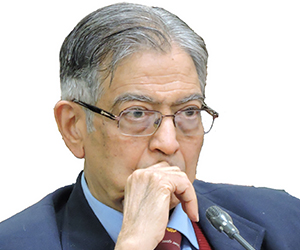
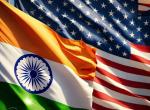
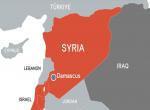
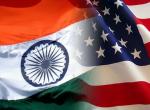

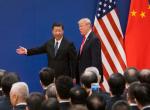
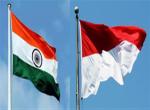


Post new comment